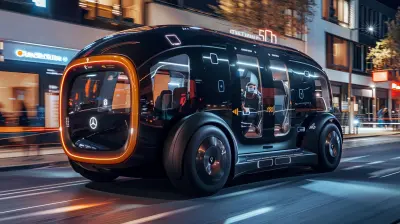The Environmental Benefits of Going Driverless
3 August 2025
Let’s be real—technology has a way of creeping into every corner of our lives. From pocket-sized supercomputers (aka smartphones) to fridges that literally text you when you're out of milk, it's safe to say we’re swimming in innovation. But there’s one game-changing tech that’s revving its engine to tackle one of the biggest global challenges: climate change. Yep, I'm talking about driverless cars.
Now, I get it. At first glance, self-driving cars might not scream "green revolution." But hold tight, because when you peel back the layers, autonomous vehicles are more eco-friendly than they may seem. So, grab a coffee and buckle up—we’re about to cruise through how going driverless could help save the planet. 🌍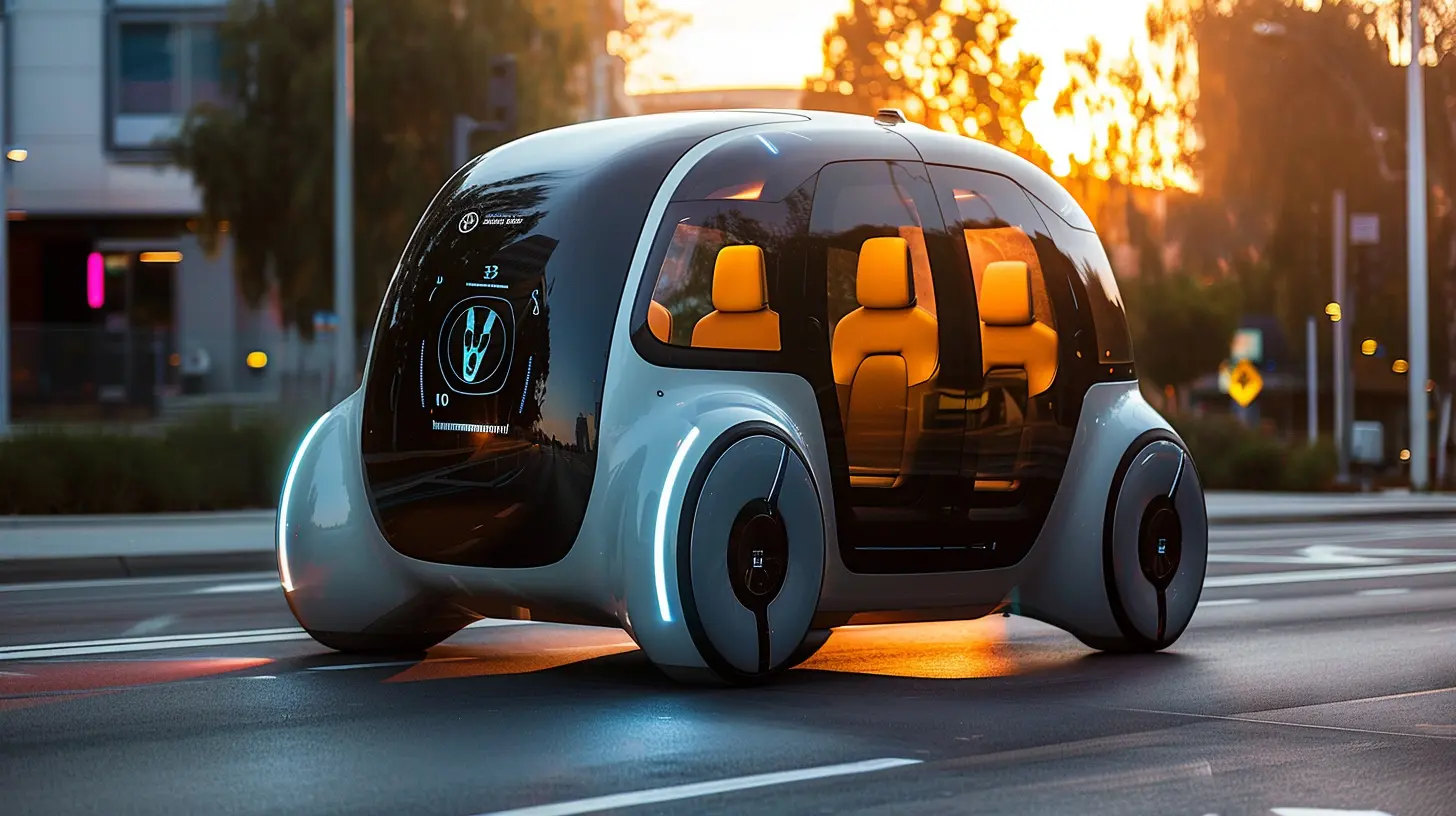
Wait, What Even Is a Driverless Car?
Let’s start with the basics. A driverless car (or autonomous vehicle/AV) is a car that can drive itself with little or no human intervention. Think of it as your car growing a brain—thanks to Artificial Intelligence (AI), sensors, radar, cameras, and a whole buffet of tech goodies.And get this: it doesn’t just “go.” It thinks. It analyzes traffic, predicts pedestrian behavior, and even obeys traffic laws (yes, better than most of us).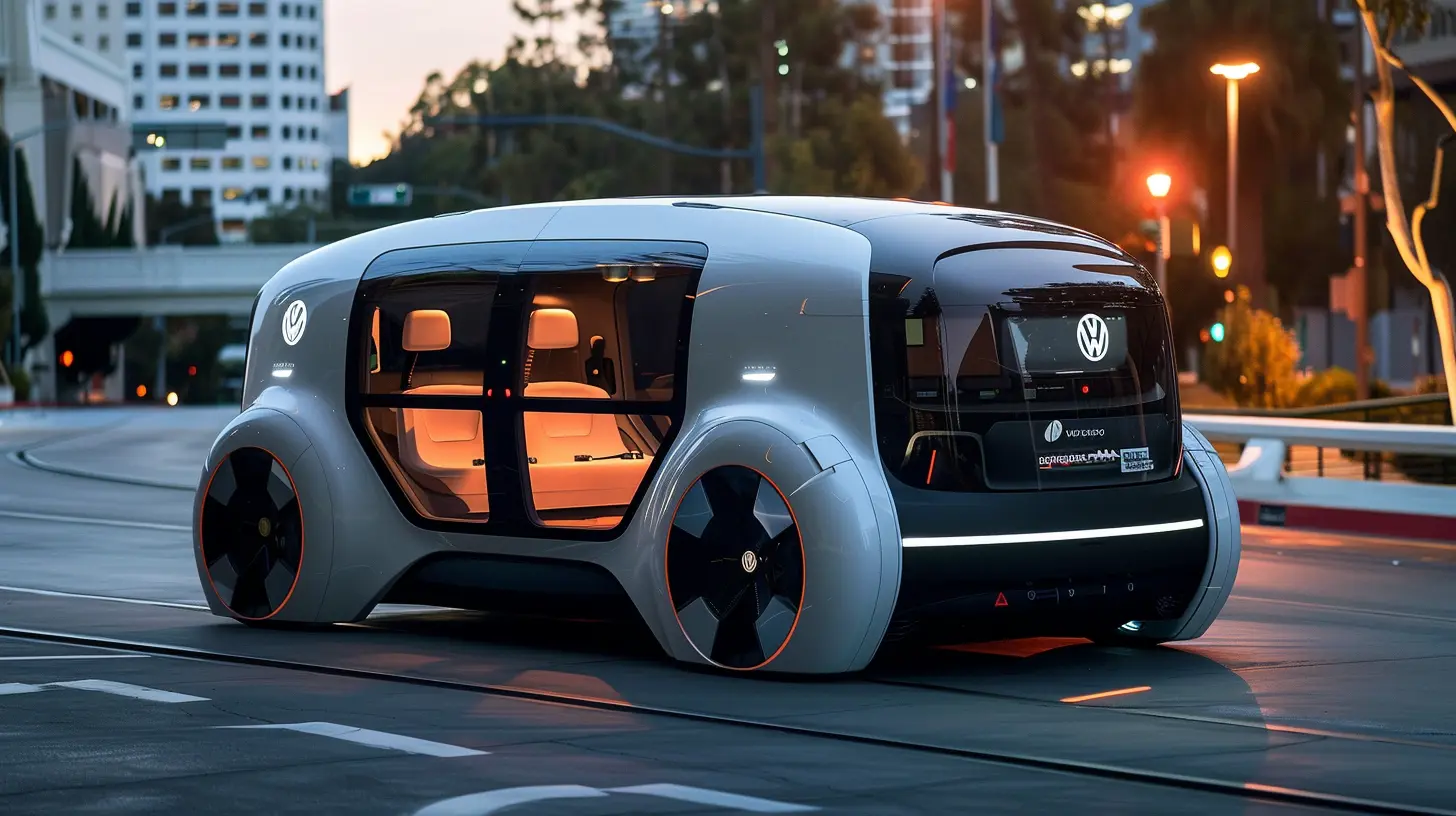
The Bigger Picture: How Transportation Damages the Environment
Before we dive into the green side of AVs, it’s important to understand just how much traditional transport hurts our planet. Spoiler alert: it’s a lot.- Greenhouse Gas Emissions (GHG): The transportation sector is one of the largest contributors to CO₂ emissions globally—think in the ballpark of 25-30%.
- Air Pollution: Cars release nitrogen oxides and particulate matter that contribute to smog and respiratory issues.
- Traffic Congestion: More idling means more emissions. Ever been stuck on a freeway with your engine running? Multiply that by millions.
- Urban Sprawl: Car-focused cities lead to longer commutes and more gas-guzzling.
So yeah, it’s not just an inconvenience. Traditional driving habits are basically a slow-motion punch to our environment’s face.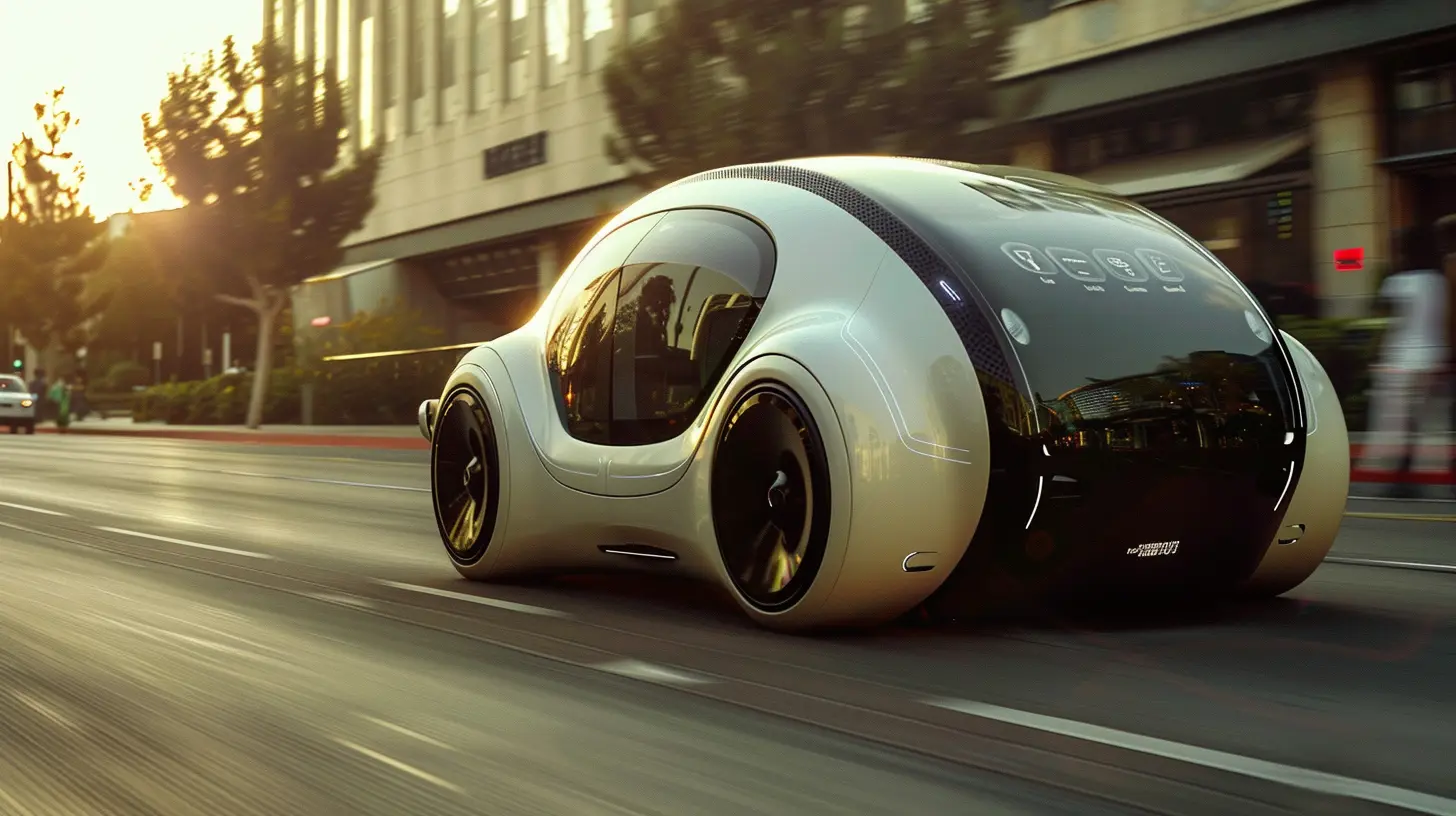
1. Driverless Cars Could Slash Carbon Emissions
Here’s where the good news starts rolling in. One of the biggest advantages of autonomous vehicles is their potential to reduce greenhouse gas emissions.How?
- Precision Driving: Self-driving cars don’t brake suddenly or accelerate like a teenager with their first license. They drive smoother, and smoother driving = better fuel efficiency.- Optimized Routes: Thanks to real-time traffic data, AVs can choose the shortest, least congested route. That means less time on the road and fewer emissions.
- Platooning: This is a fancy word for cars driving closely together at constant speeds (without tailgating, of course). It lowers wind resistance and boosts fuel economy, especially for trucks.
- Less Idling: Ever spent 45 minutes moving 2 inches during rush hour? AVs coordinate to avoid this chaos, reducing wasted fuel from stop-and-go traffic.
If you're wondering how big this could be, a study by the University of California suggests that AVs could cut emissions by up to 60% under the right conditions. That’s a serious dent in the carbon footprint.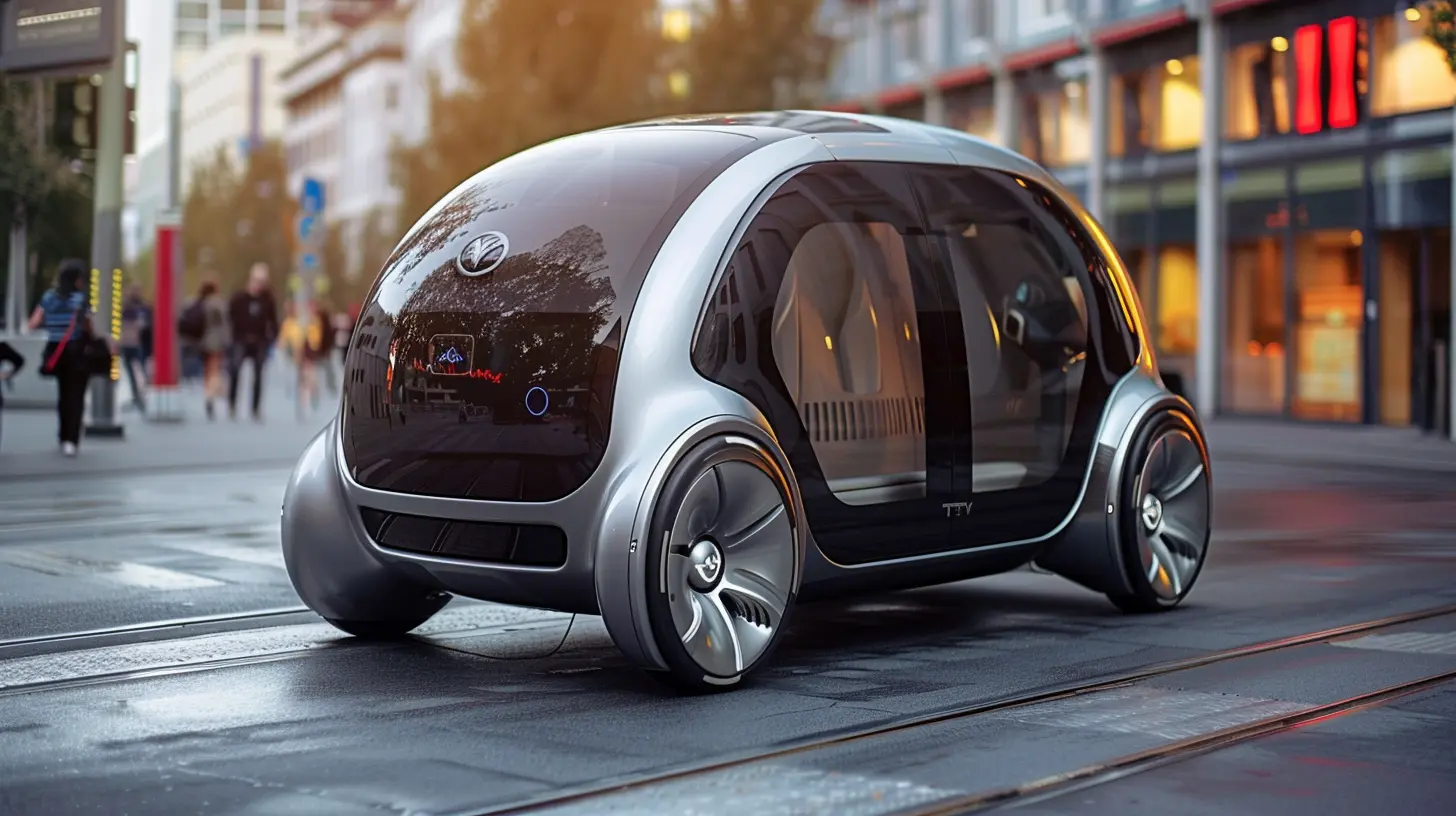
2. Going Electric + Driverless = Double Win
Most companies developing driverless car tech are also focusing on electric vehicles (EVs). Tesla, Waymo, Cruise, and others are essentially baking both green technologies into one sweet, eco-friendly pie.So, what happens when you combine EVs with autonomy? You get:
- Zero tailpipe emissions
- Lower carbon footprint over the vehicle’s lifecycle
- Less dependency on fossil fuels
Think of it like pairing peanut butter and jelly—great on their own, but next-level when combined.
3. Reducing the Number of Cars on the Road
Sounds backward, right? If AVs are the future, shouldn't we expect more cars?Not necessarily.
Here’s the logic:
With driverless ride-sharing and robo-taxis, car ownership could drop. People might not need (or want) personal vehicles when they can just hail an AV that shows up at their doorstep—no driving required.Fewer personal vehicles mean:
- Less manufacturing emissions
- Less road congestion
- Fewer parking spaces needed → more green spaces
And let’s be honest, do we really need every apartment complex to be surrounded by concrete parking lots? It’s time we traded some of that asphalt for urban gardens or parks.
4. Fuel Efficiency, But Make It Smart
Let me hit you with a fun fact: traditional human driving is terribly inefficient.Think about it—hard braking, sudden stops, speeding, taking the long way because you “felt like it.” It’s not exactly a recipe for fuel conservation.
Autonomous vehicles, on the other hand, are like that friend who calculates their grocery route to avoid backtracking. They’re logical, calm, and consistent. Thanks to algorithms that prioritize fuel economy, AVs could bump up fuel efficiency by 10-20%, even in gas-powered models.
Every drop of fuel saved means fewer emissions. It’s like your car joined a yoga class and learned how to be more relaxed and mindful.
5. Improved Traffic Flow = Lower Emissions
Traffic jams aren’t just annoying—they’re gas-guzzling nightmares. Every minute your engine idles in traffic dumps more carbon into the atmosphere.AVs can communicate with each other in real-time, adjusting speeds and changing lanes in harmony. This synchronized movement helps:
- Smooth out traffic flow
- Reduce idling
- Minimize stop-and-go patterns
Imagine a city where cars glide along like a school of fish instead of a mosh pit of honking metal. That’s the vision here.
6. Smarter Urban Planning
Driverless cars could literally reshape our cities—for the better.Fewer personal vehicles and less need for parking mean cities can reclaim space. Instead of multi-story parking garages and overloaded highways, we could have:
- More bike lanes
- Expanded green spaces
- Better public transport integration
- Cleaner air (because fewer emissions, duh)
It’s a domino effect: driverless cars free up space → cities invest in green infrastructure → we all benefit from a healthier environment.
7. Reduced Need for New Infrastructure
Building roads, bridges, and parking lots isn’t just expensive—it’s also carbon-intensive. We’re talking concrete, steel, and tons of energy use.With fewer vehicles on the road and better traffic management through AVs, we may not need to keep expanding road infrastructure endlessly.
This translates into:
- Lower resource consumption
- Less environmental disruption
- Fewer emissions from construction
Basically, we stop fighting traffic by building new roads and start improving how we use the ones we already have.
But Wait, It’s Not All Sunshine and Rainbows…
Now, let’s address the elephant in the room. Can driverless technology be 100% eco-friendly? Not quite yet.There are some environmental downsides that still need solving:
- Energy demands from data centers running AV algorithms
- Battery production for electric AVs has an environmental toll
- Transition period might increase car sales before car-sharing becomes dominant
But don’t give up hope. These are challenges, not deal-breakers. As tech evolves, efficiency improves. And if we’re smart about implementation (like pushing for EVs and renewable energy), we can make the shift as green as possible.
What Can You Do Today?
You might be thinking, “Cool, but I’m not exactly going to build a driverless car in my garage.”Fair enough! But you can still be part of the movement:
- Support Local Policies that encourage EVs and clean transportation.
- Try Carpooling or Rideshare Options to cut down on traffic.
- Stay Informed and advocate for greener tech solutions.
- Reduce Your Driving Footprint, even if only a little. Every bit counts.
Driverless vehicles are just one piece of the sustainability puzzle, but they could be a pretty big one.
Conclusion: A Greener Future Is on the Horizon
Driverless cars might sound like something out of a sci-fi movie, but their environmental benefits are very much real—and coming fast. From slashing emissions to reshaping our cities, autonomous vehicles have the potential to make our world cleaner, smarter, and a little less chaotic.Of course, this green revolution isn’t automatic. (Pun totally intended.) It’s going to take thoughtful planning, supportive legislation, and a shift in how we think about transportation. But the potential? It’s huge.
So the next time someone grumbles about robots taking over the road, just remind them: these aren’t just smart cars—they’re green warriors in disguise.
all images in this post were generated using AI tools
Category:
Autonomous VehiclesAuthor:

John Peterson
Discussion
rate this article
1 comments
Victoria McCallum
Embrace innovation for a cleaner future!
August 6, 2025 at 2:31 AM

John Peterson
Absolutely! Embracing innovation, like driverless technology, can significantly reduce emissions and promote sustainable transportation.
